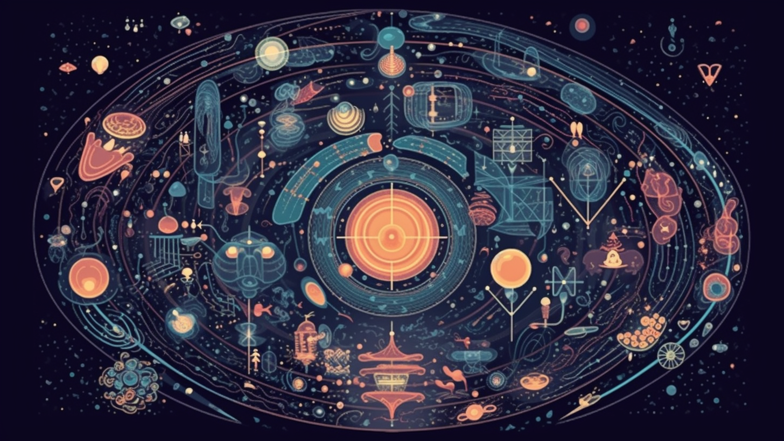
Astroparticle physics is a vast field of study that attempts to uncover the mysteries of the universe by exploring the properties of its fundamental particles and forces. This interdisciplinary field combines astronomy, particle physics, and cosmology to answer some of the most intriguing questions about the universe, such as the nature of dark matter, the origin of cosmic rays, and the properties of neutrinos.
One of the key areas of research in astroparticle physics is the study of cosmic rays. Cosmic rays are energetic particles that originate from outside the solar system and travel through space at nearly the speed of light. They are composed of protons, electrons, and other atomic nuclei, and can have energies up to billions of times greater than those produced by particle accelerators.
Despite their ubiquitous presence in the universe, little is known about the sources of cosmic rays or their precise composition. One leading theory is that they are produced by supernovae, the explosive deaths of massive stars that scatter their contents into the interstellar medium. However, this theory has not been fully proven, and the exact processes by which cosmic rays are produced, accelerated, and propagated through space remain a mystery.
Another area of research in astroparticle physics is the search for dark matter, a mysterious form of matter that is believed to make up around 85% of the matter in the universe. Dark matter does not interact with light, and its exact nature and properties are still unknown.
One of the most promising methods for detecting dark matter is through the use of underground detectors, such as the Large Underground Xenon (LUX) experiment. This experiment is designed to detect the rare interactions between dark matter particles and ordinary matter in a large tank of liquid xenon. Although several possible dark matter detections have been reported, none have been conclusively confirmed, and the search for dark matter continues.
Neutrinos are another type of fundamental particle that plays an important role in astroparticle physics. Neutrinos are extremely lightweight particles that are produced in various astrophysical phenomena, such as supernovae, gamma-ray bursts, and active galactic nuclei.
Neutrinos have several unique properties that make them difficult to detect, including their lack of electric charge and their extremely small likelihood of interacting with matter. However, they can be detected using large-scale detectors, such as the Super-Kamiokande experiment in Japan, which uses a large tank of water to detect the faint flashes of light produced when neutrinos interact with atomic nuclei.
Study of neutrinos has helped to unveil several new insights into the behavior of these fundamental particles. One major discovery is the phenomenon of neutrino oscillation, in which neutrinos change from one flavor to another as they travel through space. This discovery has far-reaching implications for particle physics and cosmology and has opened up new areas of research into the properties of neutrinos.
Astroparticle physics also involves the study of the cosmic microwave background (CMB), the afterglow of the Big Bang that fills the observable universe. The CMB is a relic of the early universe, and by studying its properties, researchers can learn about the structure, composition, and evolution of the universe.
Recent observations of the CMB have provided important insights into the composition of the universe, indicating that it is composed of approximately 5% ordinary baryonic matter, 27% dark matter, and 68% dark energy. This discovery has led to a renewed focus on understanding the nature of dark matter and dark energy and their role in the universe's evolution.
Another exciting area of research within astroparticle physics is the study of high-energy astrophysical phenomena, such as gamma-ray bursts, supernovae, and quasars. These events produce vast amounts of energy and can have a significant impact on the structure and evolution of the universe.
Studying these events can provide important insights into the physical processes that govern the universe's behavior, as well as into the composition and properties of the fundamental particles that make up the universe. The development of new observational techniques, such as gravitational wave astronomy, promises to yield new discoveries and insights into high-energy astrophysics in the coming years.
In conclusion, astroparticle physics is an intriguing and rapidly evolving field of study that seeks to uncover the secrets of the universe through the exploration of its fundamental particles and forces. From cosmic rays to dark matter, neutrinos to high-energy astrophysical phenomena, researchers are making exciting new discoveries that promise to revolutionize our understanding of the cosmos.
The interdisciplinary nature of astroparticle physics, combined with advances in observational and experimental techniques, makes it an essential field of study for scientists interested in the fundamental workings of the universe. As we continue to push the boundaries of our knowledge and understanding, the mysteries of the cosmos will undoubtedly continue to fascinate and inspire us, driving the next generation of scientific discoveries and breakthroughs.
Comments
Post a Comment